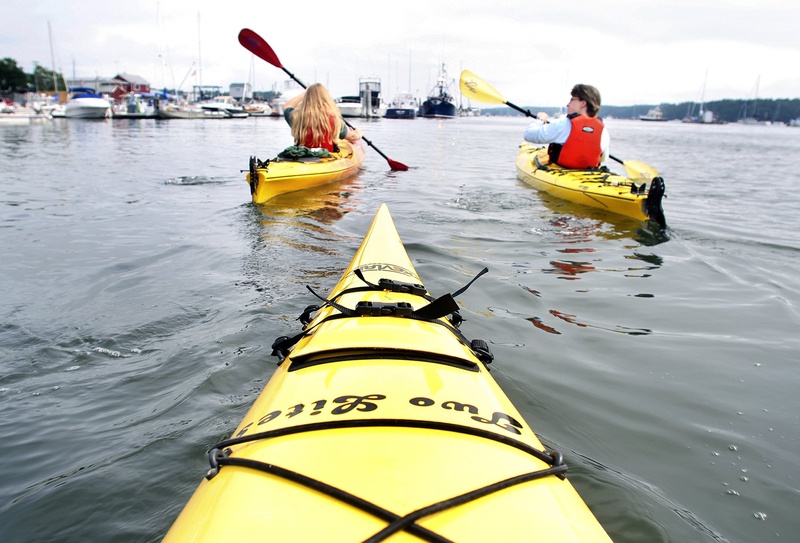Q: What kind of kayak should I buy?
A: That’s a good question because there are plenty of choices. Let’s narrow the field down a bit and assume you aren’t an adrenaline fiend who’s looking to ride rampaging rapids in a whitewater kayak.
That leaves a lot of kayaks that can be paddled on ponds, lakes and the ocean. This is a good point – realize you’re not going to find the perfect kayak. Each one has its strengths and weaknesses. What’s a good kayak for one person might not work for you.
What you seek is a kayak that’s a good fit for a beginner like you. There are two questions that can help you make the right choice.
“You’re a beginner now but where do you want to be?” is what Ponch Membreno, co-owner of Lincoln Canoe & Kayak in Freeport, asks about the kind of kayaking you want to do. Then he’s going to ask, “Have you ever progressed through any other sport?”
Ponch has been paddling and leading kayak trips for 20 years. He has been co-owner of Lincoln for about a year. His focus is on the business side and he works a lot with people buying their first kayak. He says he wants you to be comfortable with a kayak that can be used as you progress in ability. Right now you may be a beginner and that skill level may keep you restricted to calm water. You can paddle just about any kayak in those conditions. But if you progress in paddling ability and ambition, you’re going to want to take the kayak in confused waters, where waves, current and wind have to be taken in account. That’s what you encounter in the ocean.
Not every kayak is built for those conditions. Rec boats – recreational kayaks – are fine for calm ponds and lakes. They tend to be shorter than 16 feet and wide. Which is fine for short periods of time. Longer and more narrow kayaks move through the water more efficiently, which make it easier to take longer trips. Especially if they’re loaded for a camping trip.
Rec boats also tend to have flat-bottom hulls. That shape gives it excellent primary stability. In other words, when you sit in the boat in calm water, it feels very stable and is hard to tip. That’s good. Right? Yes, on calm water. But in more active waters, a sea kayak with a more rounded or V-shaped hull is better. That’s because those boats have a secondary stability that keeps the kayak from tipping completely if it starts to lean on one side.
Believe it or not, there will be times you will want to lean your kayak. As you get better, you’re going to want to lean the kayak to one side to brace against waves and turn it. It’s not hard to do but will take some work with your hips. Yes, you use more than your arms when paddling a kayak.
To be able to use your hips to rotate a kayak, you’re going to have to fit into the cockpit snugly. “wearing” a boat that has contact with your hips and knees, you can perform a lot more maneuvers.
Ponch says it’s like fitting high-performance ski boots. When you move your foot, you want the boot and ski to respond. If the boot is loose, some motion won’t transfer to your skis. The same principle works in a kayak.
But if you don’t plan to progress as a paddler but stick to calm waters, you can do well with a rec boat that anyone can be comfortable paddling. And that’s not a stretch.
People of all shapes and sizes can paddle. It’s more about finesse than strength says Ponch. “It’s a very gentle sport.”
Carl Natale is a Registered Maine Sea Kayak Guide and freelance writer who loves paddling his 17-foot sea kayak on long trips. He says sooner or later you’re going to hear the siren call of the seas so buy the sea kayak now. You can read more about his adventures at CarlNatale.com and send questions to: outdoorsman@carlnatale.com
Send questions/comments to the editors.



Success. Please wait for the page to reload. If the page does not reload within 5 seconds, please refresh the page.
Enter your email and password to access comments.
Hi, to comment on stories you must . This profile is in addition to your subscription and website login.
Already have a commenting profile? .
Invalid username/password.
Please check your email to confirm and complete your registration.
Only subscribers are eligible to post comments. Please subscribe or login first for digital access. Here’s why.
Use the form below to reset your password. When you've submitted your account email, we will send an email with a reset code.